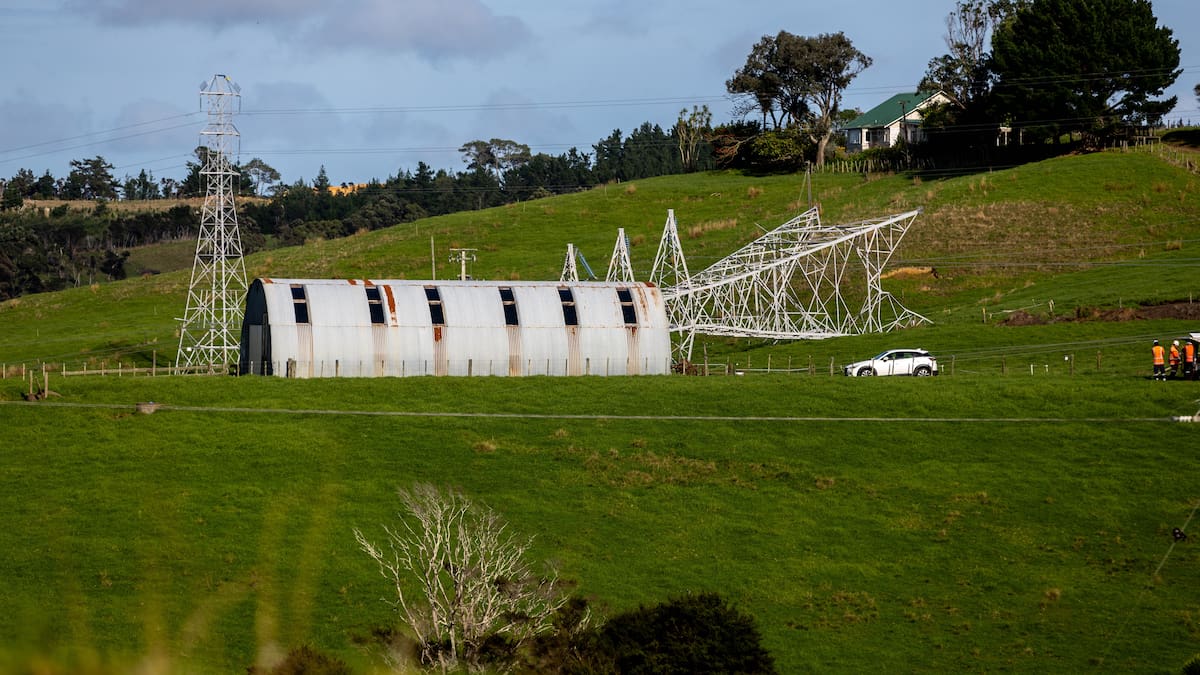The report noted that compensation and the impact of the outages following the incident on residents and businesses was “outside the scope of the investigation”.
Omexom New Zealand managing director Mornez Green apologised to those impacted by the outage and said it was an “extremely difficult time for our team”.
“We’ve been doing this type of work successfully for decades. Our standard practice was not adhered to – this cannot happen ever again.
“No work should ever be done that compromises tower stability,” he said.

Transpower acting chief executive John Clarke apologised to everyone affected by the resulting power cuts.
“We never like to see power cuts and we apologise to the Northland community for the disruption caused to people’s lives and businesses,” he said.
Clarke said he couldn’t “comprehend” how inexperienced workers had been put on the job.
He said Transpower is waiting for the findings and recommendations of the investigation it requested from Omexom to better understand exactly how this situation developed.
“We can’t undo what happened, but we can put in place improved measures to prevent anything like this happening again. We accept the findings and recommendations from this investigation and are already moving to address them.”
Clarke said the investigation found that the tower would not have fallen if standard practices had been followed by Omexom’s crew.
“Our specifications require that nothing is done that could compromise tower stability. We don’t prescribe how many nuts should be removed and in what order, as service providers have the flexibility to determine their own processes that achieve the task safely and effectively,” he said.
The investigation found that Transpower can strengthen its oversight of service provider work to ensure practices are robust and that crews have the correct competencies.
Transpower acknowledged that Omexom’s incident review is still under way, as is the Electricity Authority review requested by the Minister.
A preliminary investigation into the incident revealed that maintenance crews removed all the nuts at the bottom of three legs of the power pylon that collapsed, causing a region-wide power blackout in June.
Almost 100,000 people – and businesses – across Northland were left without power.
Economics consultants Infometrics estimated the incident cost the region $60 million.
Previously, Transpower chief executive Alison Andrew said, “It is unprecedented and inconceivable that all the nuts were removed at once.”
Andrew said while Transpower was grateful no one was hurt, the failure to follow procedure had a significant impact on the people of Northland.
Transpower had appointed an external party to conduct a formal investigation into the fall.

Energy Minister Simeon Brown, meanwhile, promised there would be a full review into the “unacceptable” outage.
The pylon holding Transpower’s two 220-kilovolt (kV) transmission lines into Northland toppled over on a farm near Glorit, south of Wellsford, at about 11am on June 20.
The impact of the power outages on Northland comes after the region suffered through Cyclone Gabrielle last year, along with more subsequent heavy rain compounding issues and severing transport links throughout 2023.
Infometrics chief executive Brad Olsen said the $60m estimate came from an analysis of public estimates of the economic cost of the 1998 Auckland blackout, adjusted for inflation, economic differences between Auckland and Northland between 1998 and 2024, and other factors.
The Consumer Guarantees Act entitles individuals to compensation for power blackouts but it does not apply to businesses.
Jaime Lyth is a multimedia journalist for the New Zealand Herald, focusing on crime and breaking news. Lyth began working under the NZ Herald masthead in 2021 as a reporter for the Northern Advocate in Whangārei.



